What do you do when you lose your way?
Our behaviors when we lose our illusions of control have enormous impact on our lives. Do we run? Double down? Blame? Do we try to find the best way out? Do we settle?


“Show Me the Way I Should Walk In” ran for four nights in October 2021. A decomissioned-then-revitalized Methodist church served as the venue.

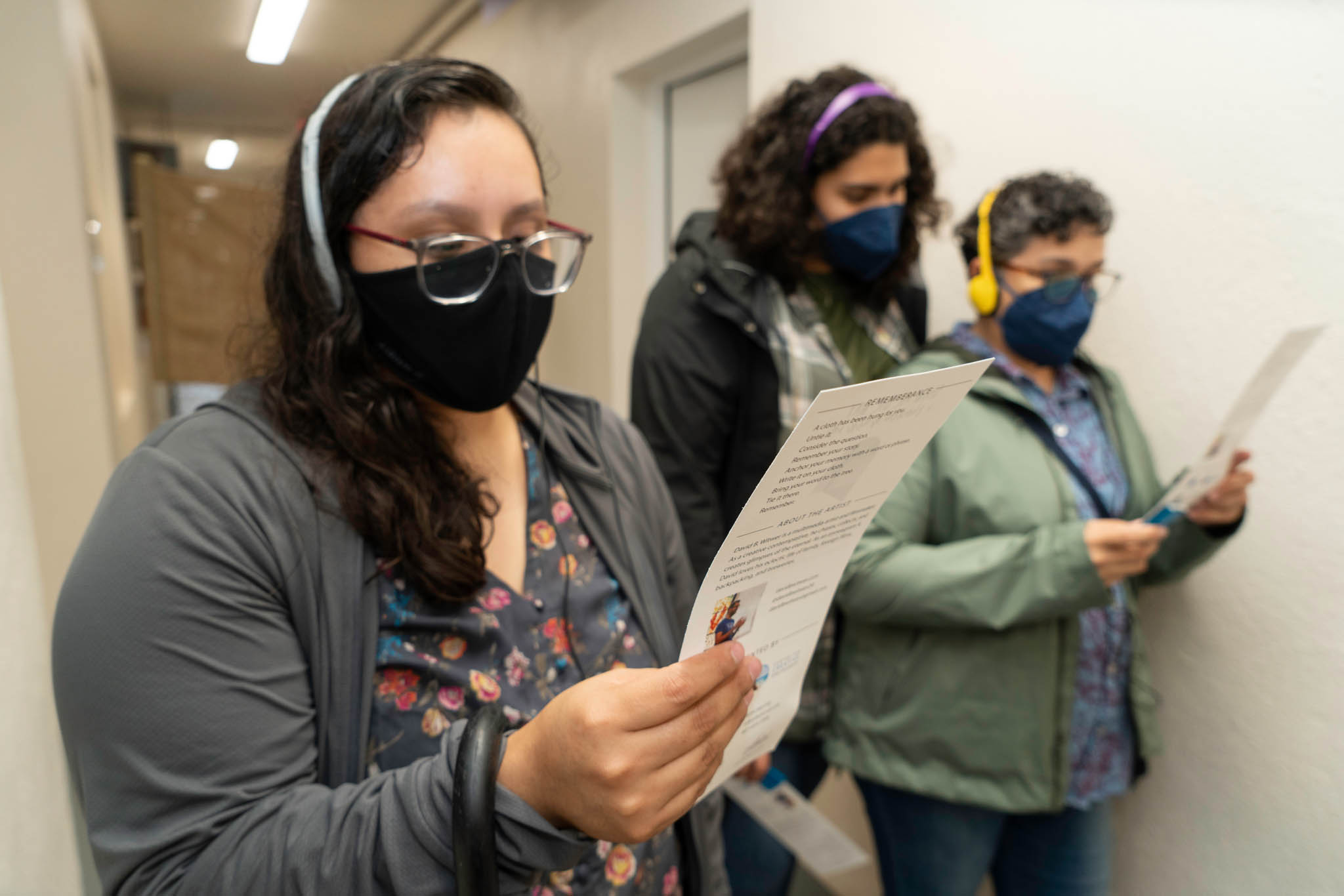
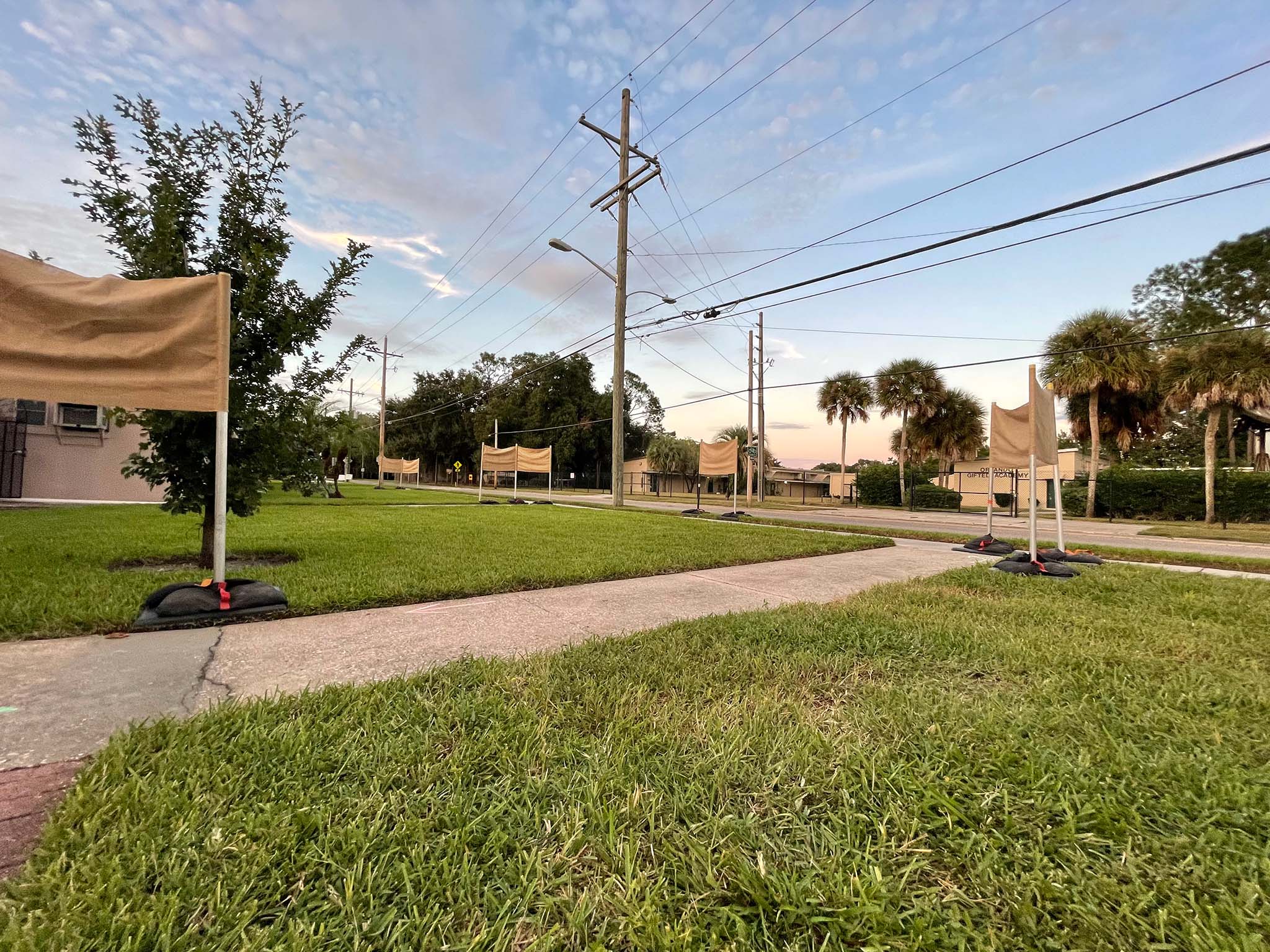
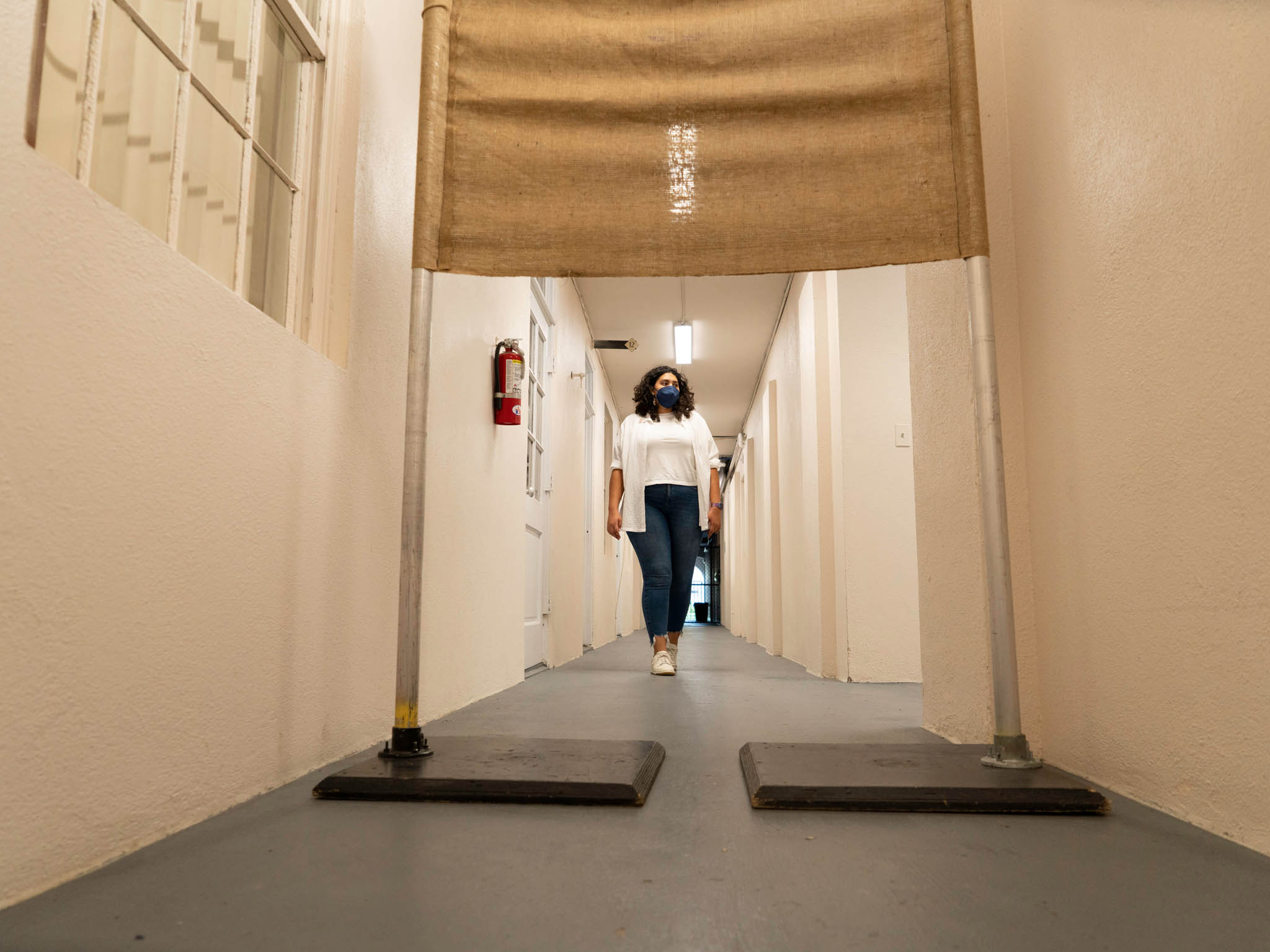
We welcomed guests and then sent them on an inward journey. Each person was given a personal audio player and a pair of headphones with choice of color. They were asked to walk and listen, following a set path through a number of indoor/outdoor hallways and an exterior courtyard and sidewalk. Guests were guided by burlap panels which provided direction and coherence. While walking, an audio story chronicled the struggles of an anonymous sophomore fighting insecurity and a deadline in his department’s basement.
We then welcomed guests to the video room. Before entering they were invited to read the following artist statement.
O LORD, make haste to answer me; my spirit fails me…
show me the way I should walk in, for I lift up my soul to you.
Psalm 143:7+8
We believe we control our lives until we are lost.
Then, paralysis sets in for all muscles save one—
our eyes search endlessly for an opening,
a familiar detail, an escape.
This is a good way to get stuck.
Instead, we must receive, remember, and stop.
When we receive,
perception becomes our prayer.
When we remember the light,
we trust the darkness.
When we stop moving,
we find ourselves moved.
The image encountered presents a dark, abstract forest enveloped in swirling fog. The speed of the footage varies in tandem with a series of loud sounds—wind, fire, and an earthquake—before settling into a prolonged period of silence. The scene is lit from below with a light that slowly moves and evolves along with the dense fog.
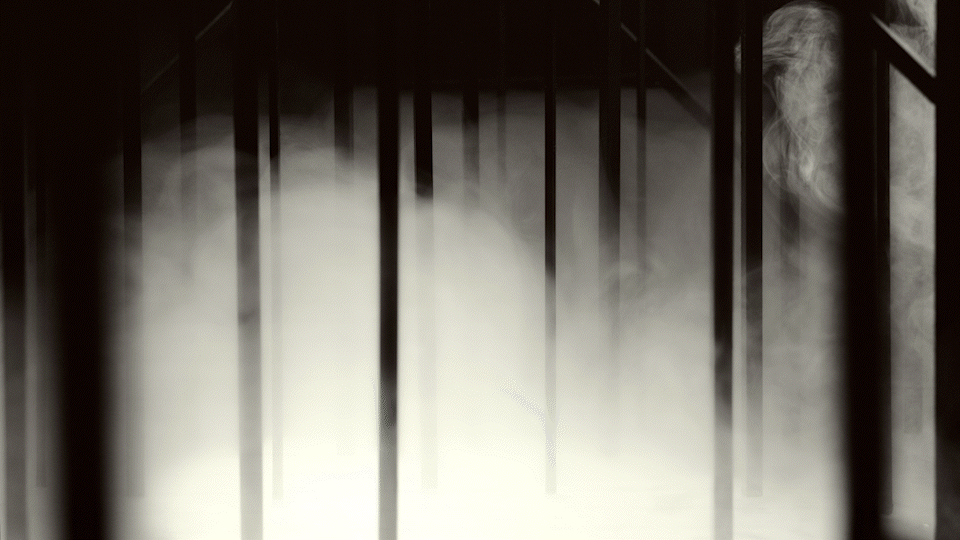
The first minutes in the room are often spent trying to decipher the scene, only to be frustrated that the sounds never match the footage. Some guests bent the facts to create a match, some left confused, and some felt that the silent portions held a kind of completeness. Guests were invited to stay as long as they wanted in the video room.
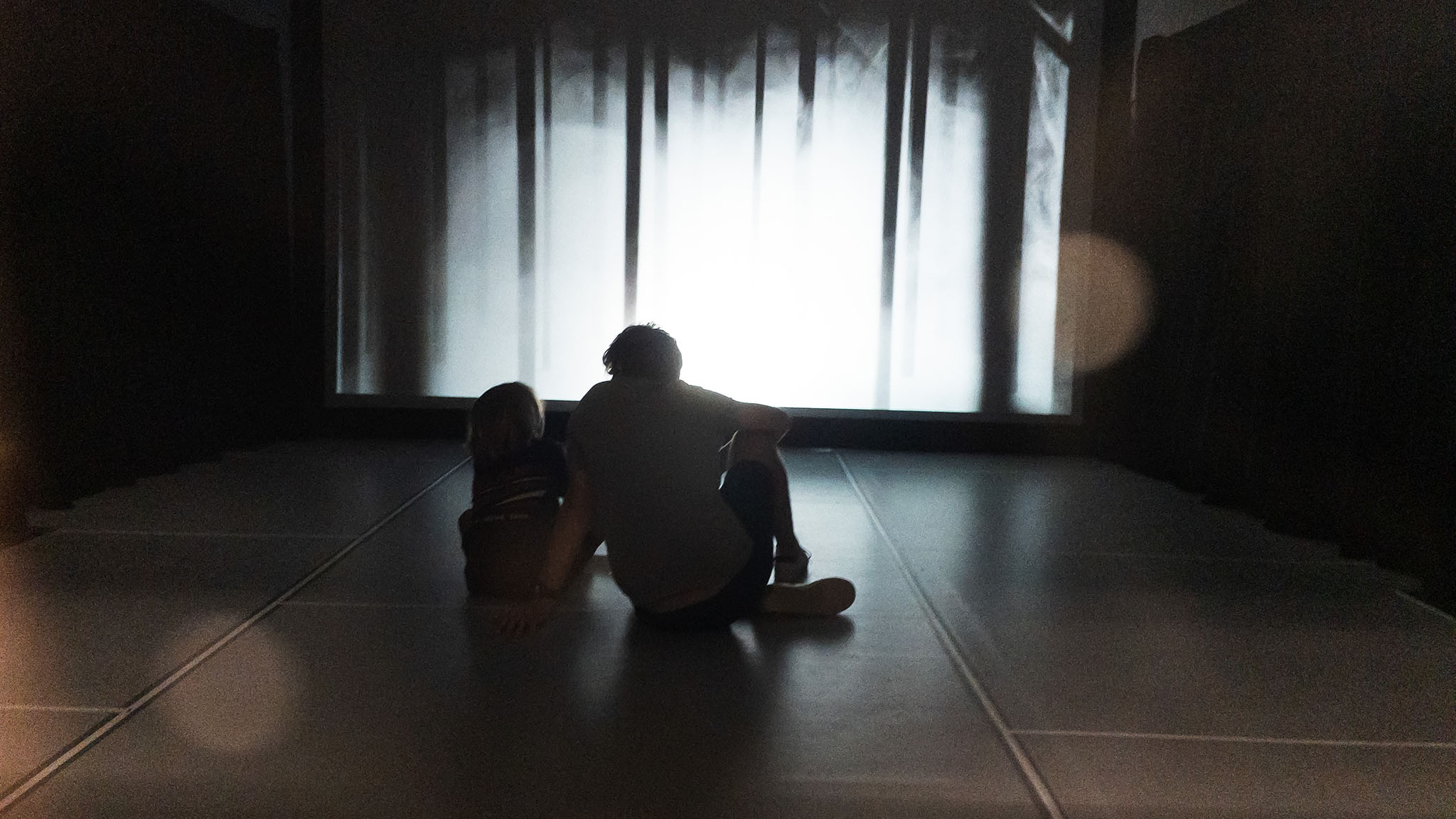
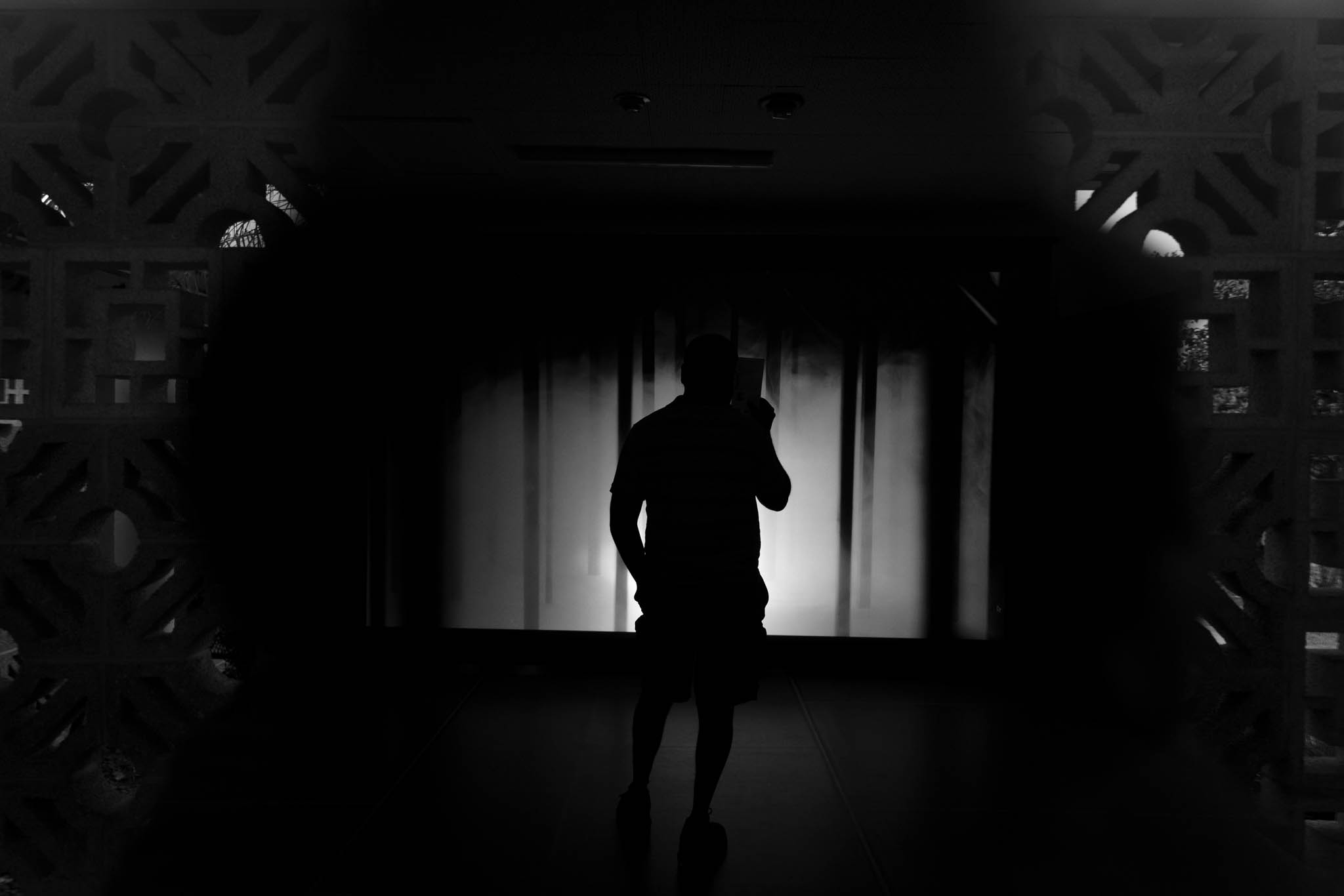
The final room presented an opportunity for remembrance. Cloth cards were hung from jute twine next to a painted display of the question, “What do you do when you lose your way?” Guests were asked to choose any cloth and untie it, then bring it to a table and write a short response to the question with marker. I was surprised to see that many sat in reflection for a number of minutes before beginning a response.
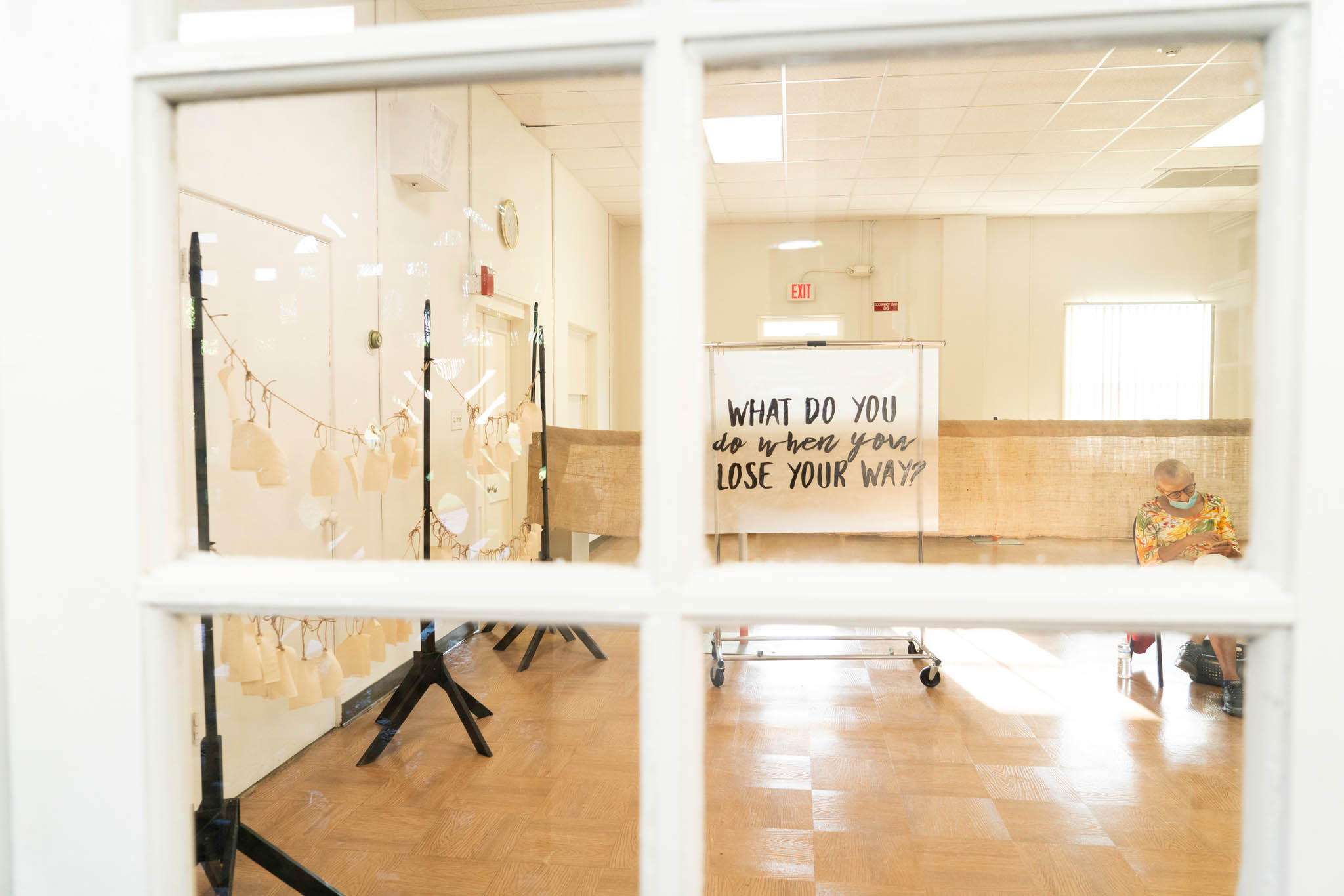

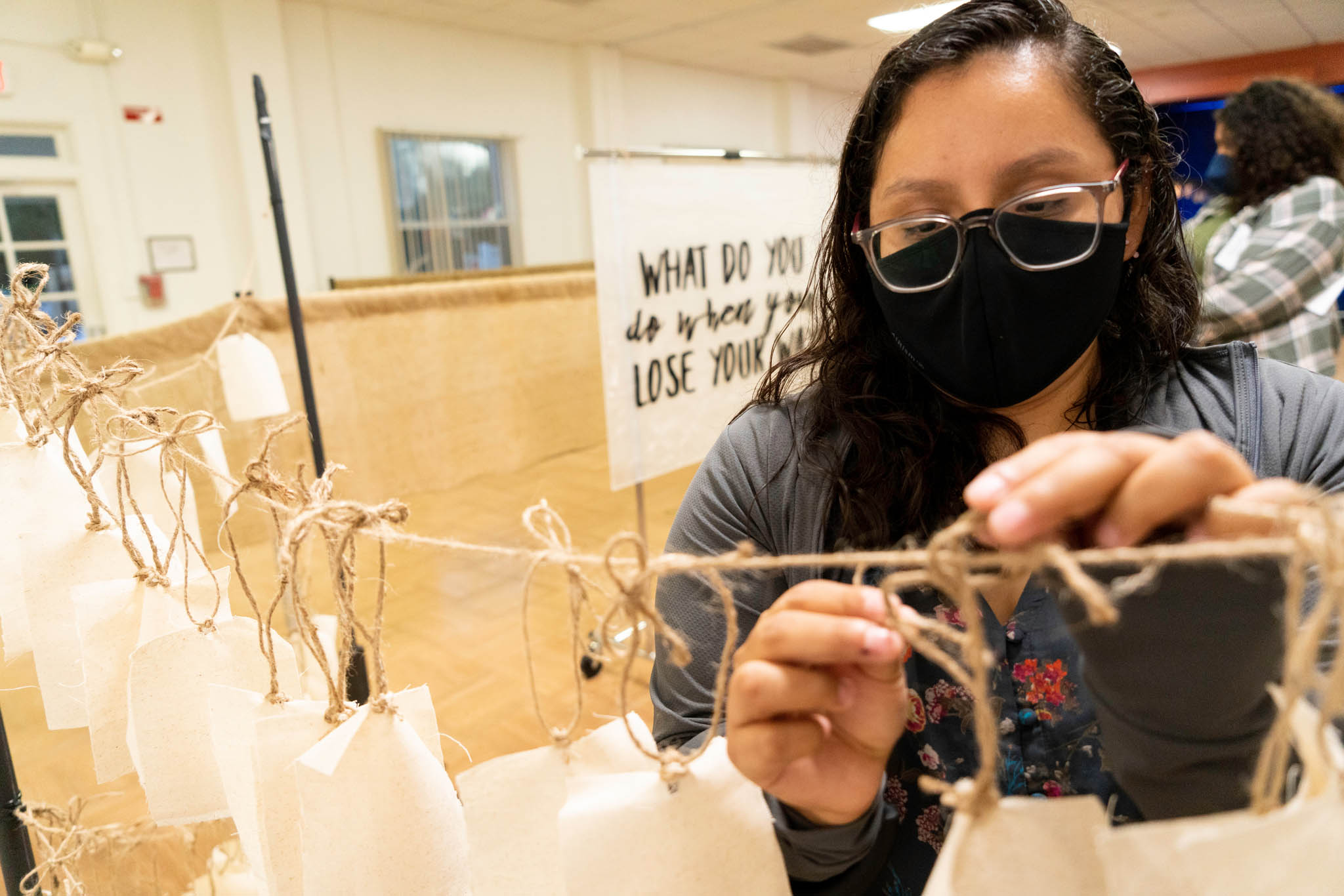
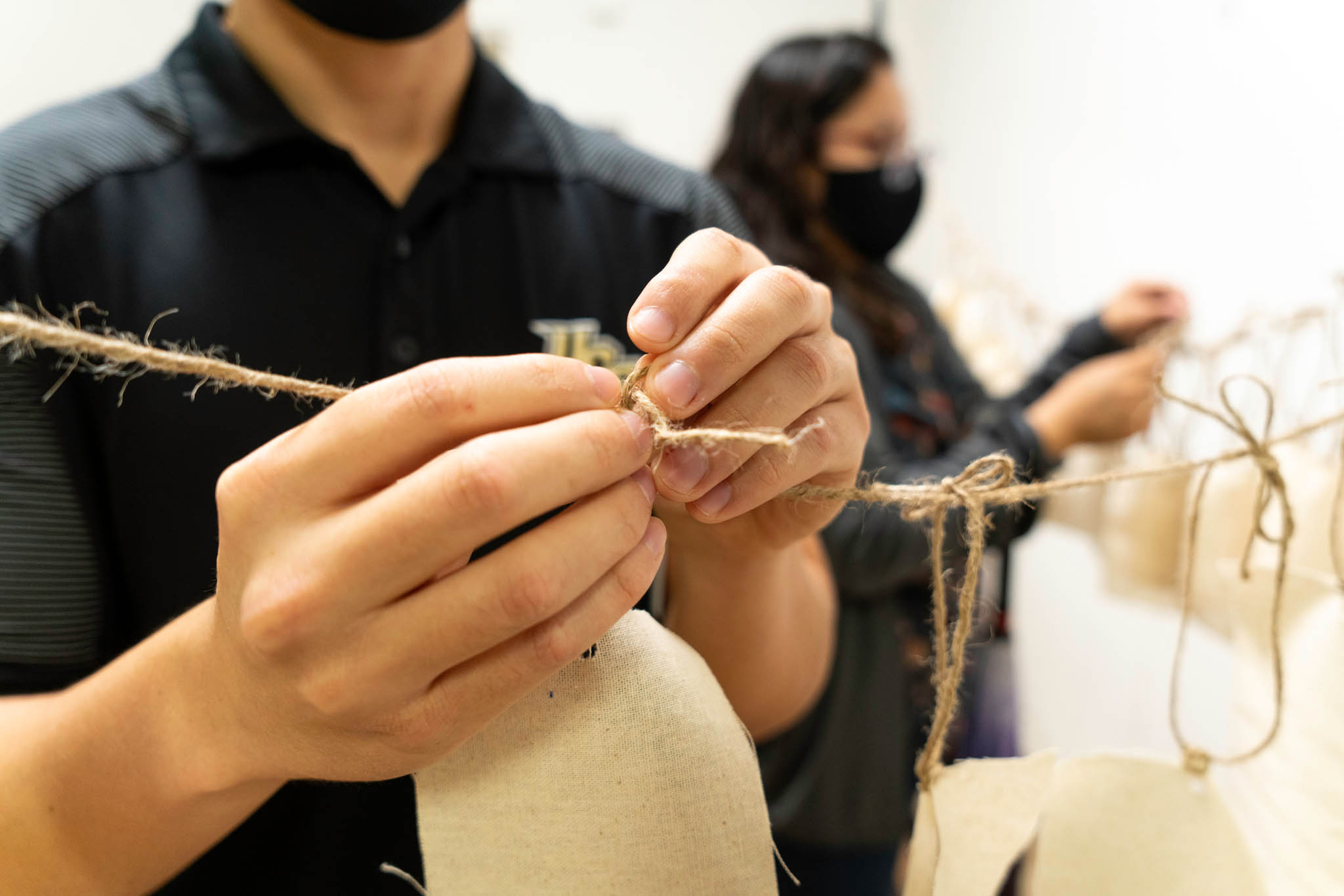
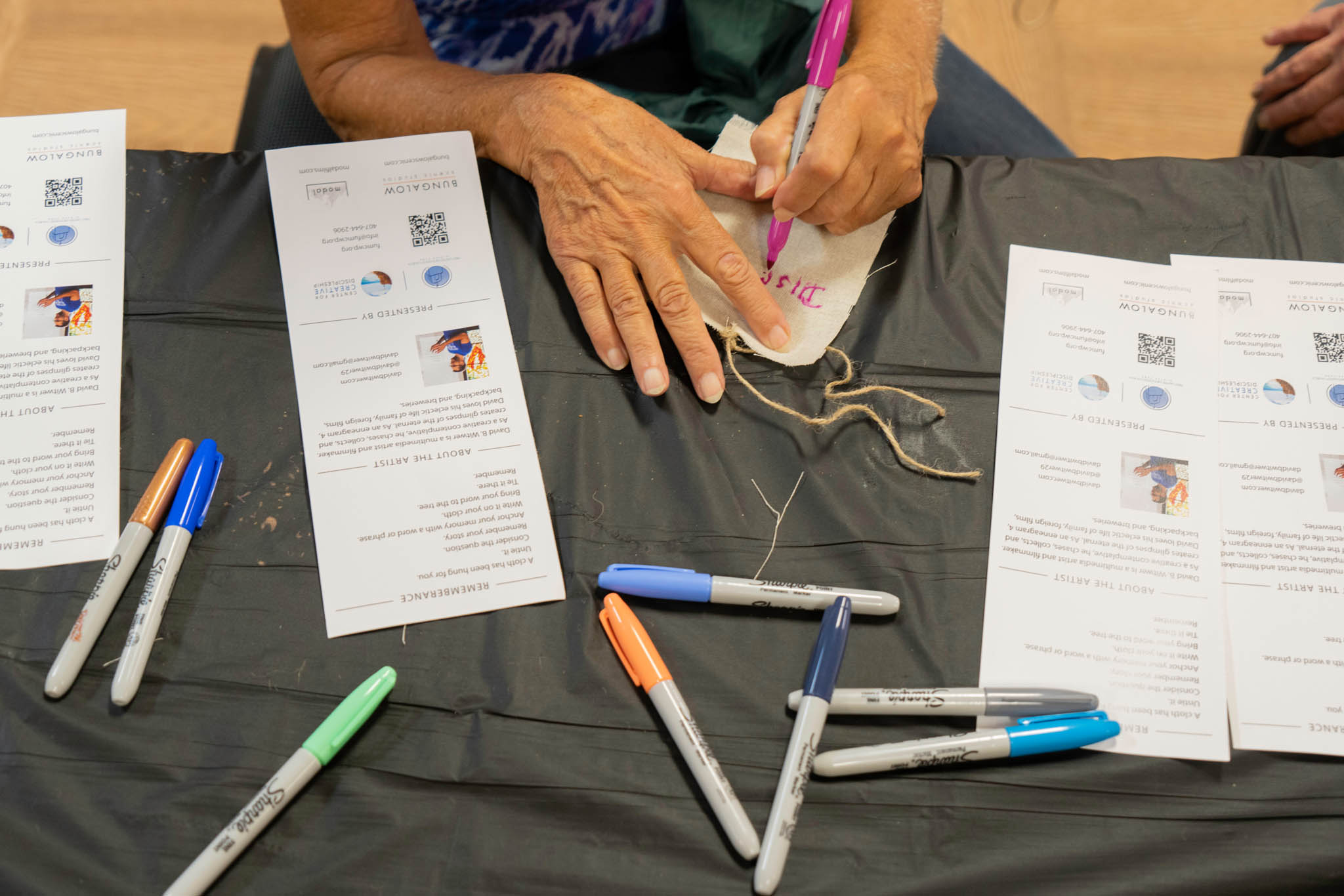
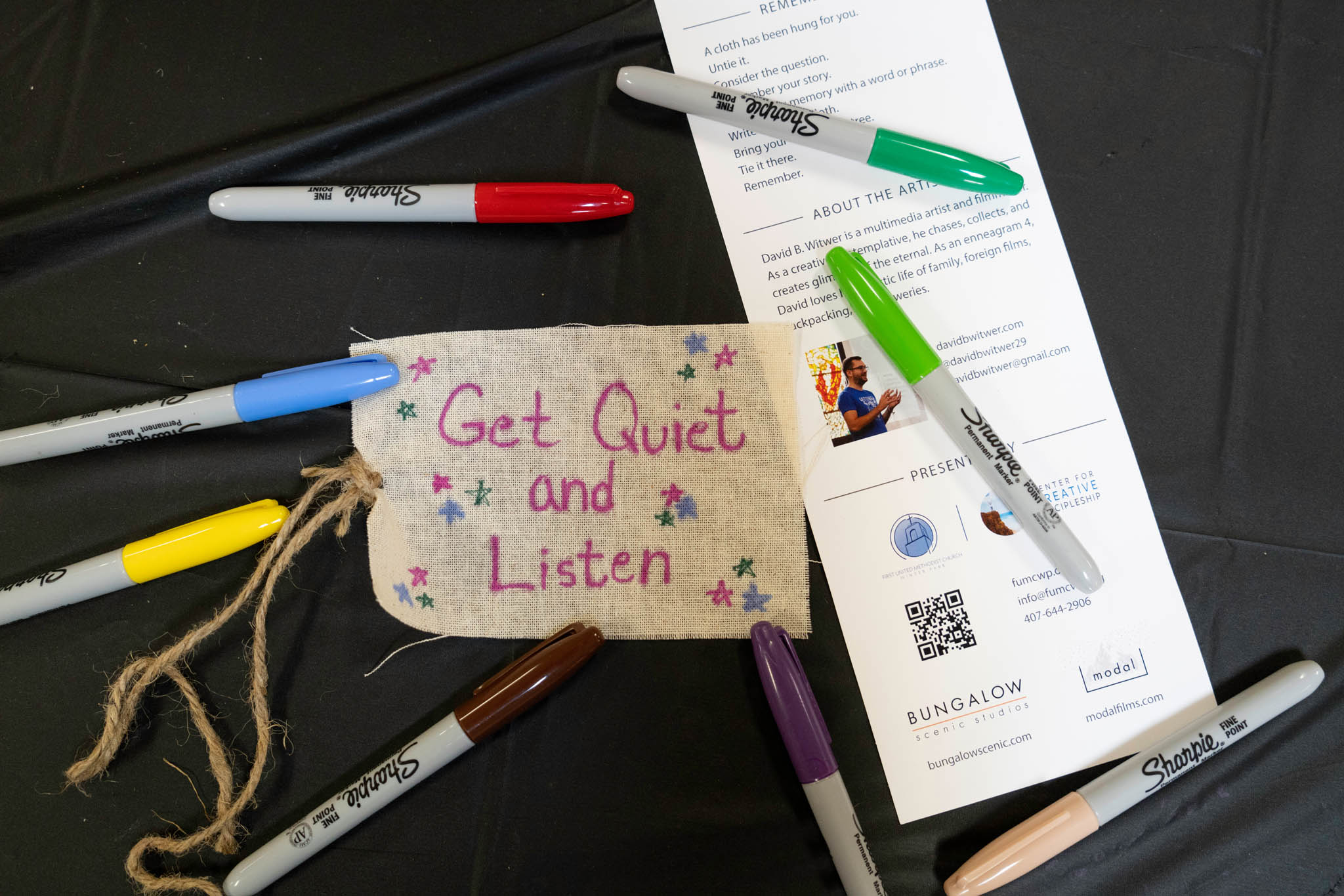
Guests were then directed by long burlap panels toward the front stage, where they took their responses and hung them on jute twine on an eight-foot abstract tree. Branches were offered at differing heights for accessibility and the tree was lit three-dimensionally. Some guests would linger at the tree reading others responses—a moment of peripheral vision—especially as the installation progressed and the tree was filled with abstract leaves.


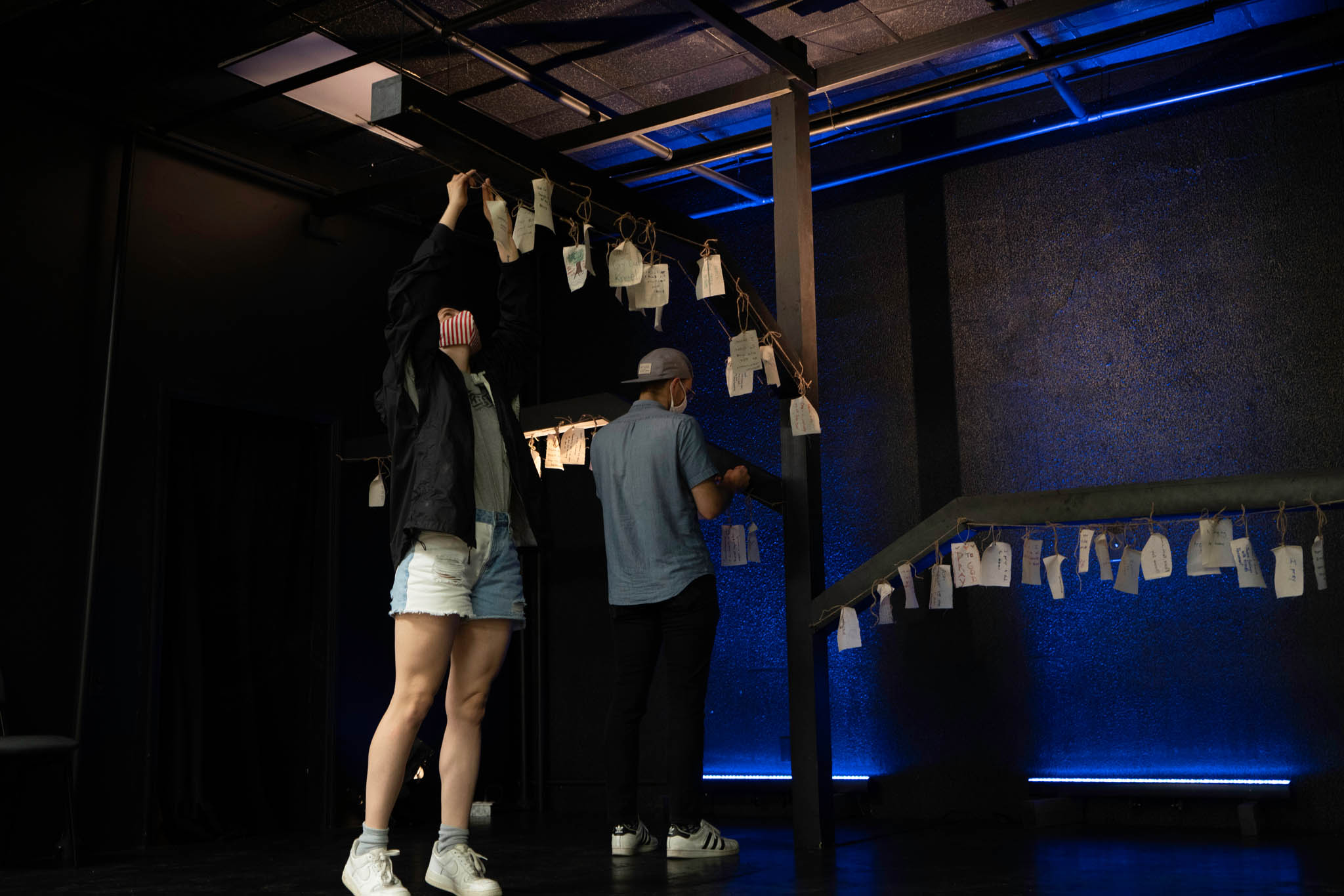
After hanging their response, guests were thanked for their participation and asked only to remember. In the short term, the written response could be reflected on—whether because it summed up the experience well, or poorly, or was an outright lie. In the long term, who knows what impressions and connections and longings can emerge.
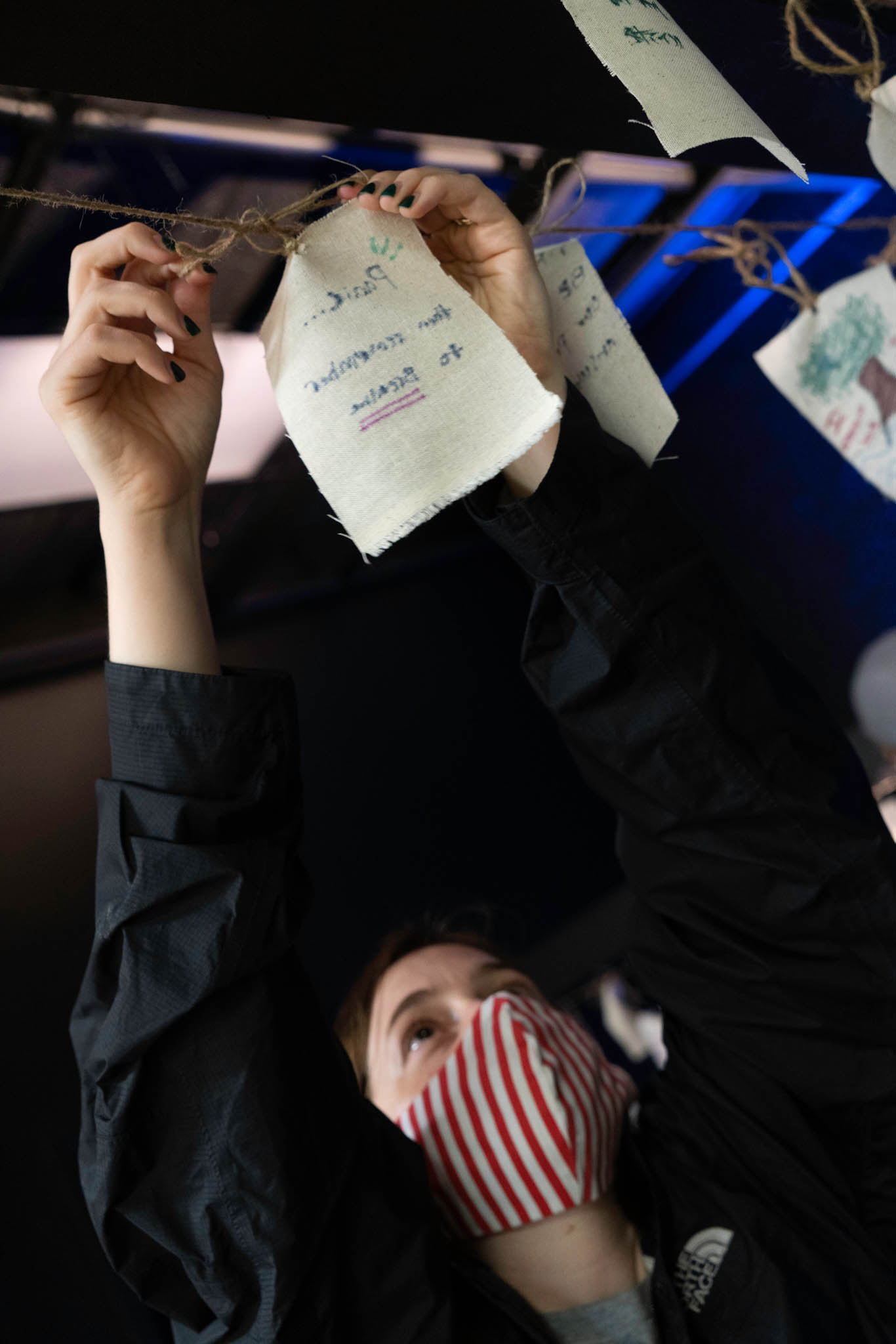
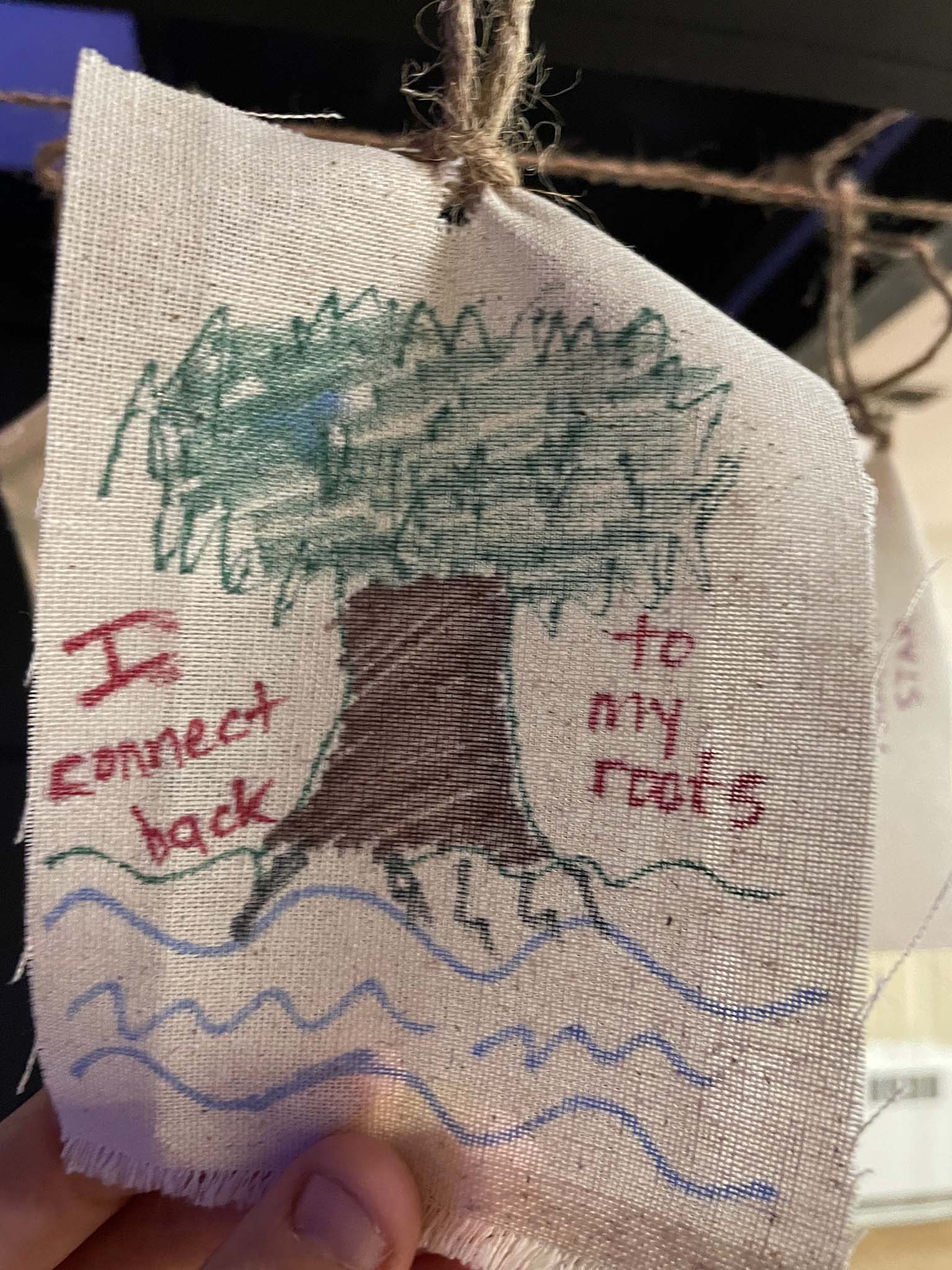
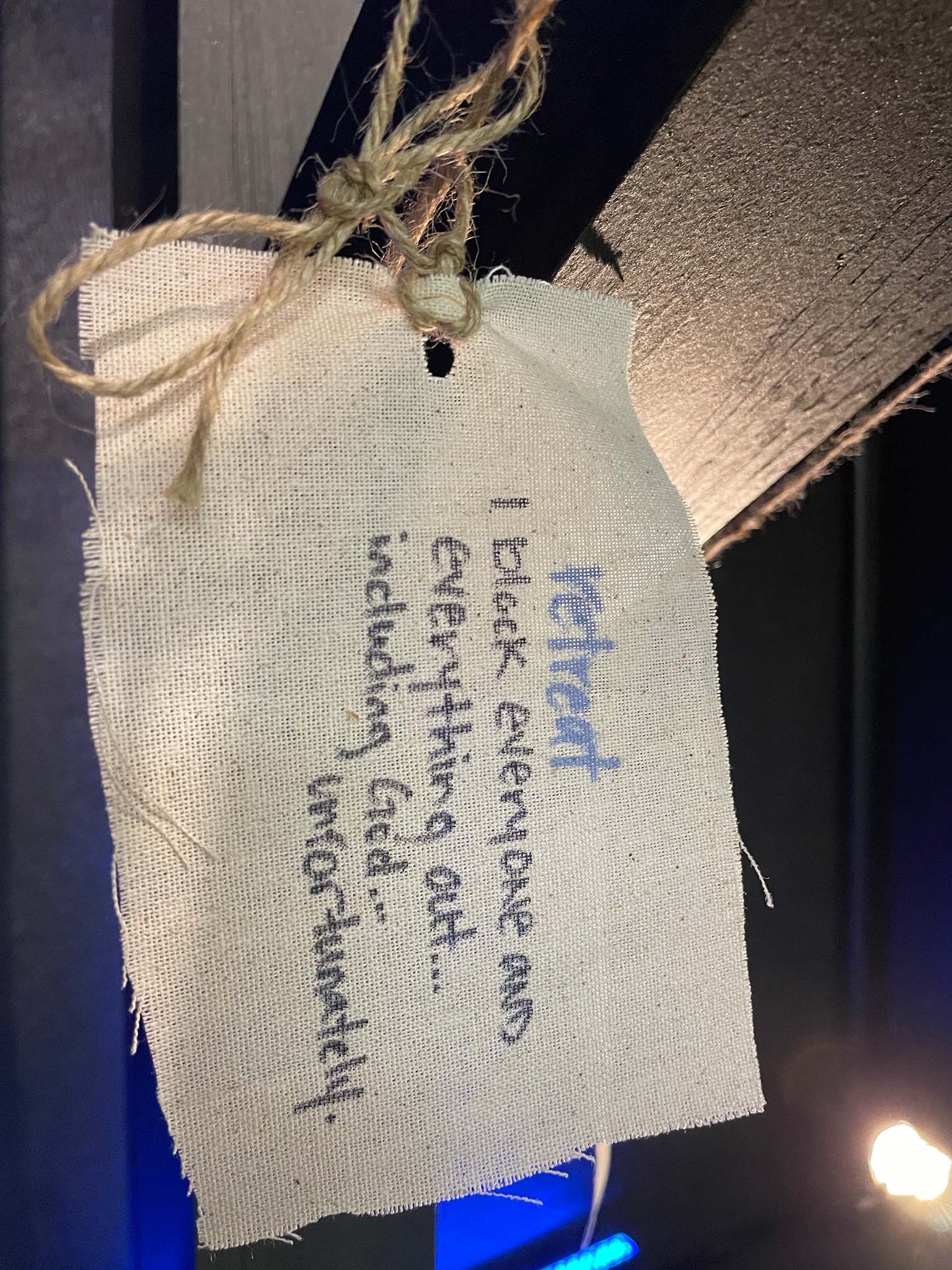



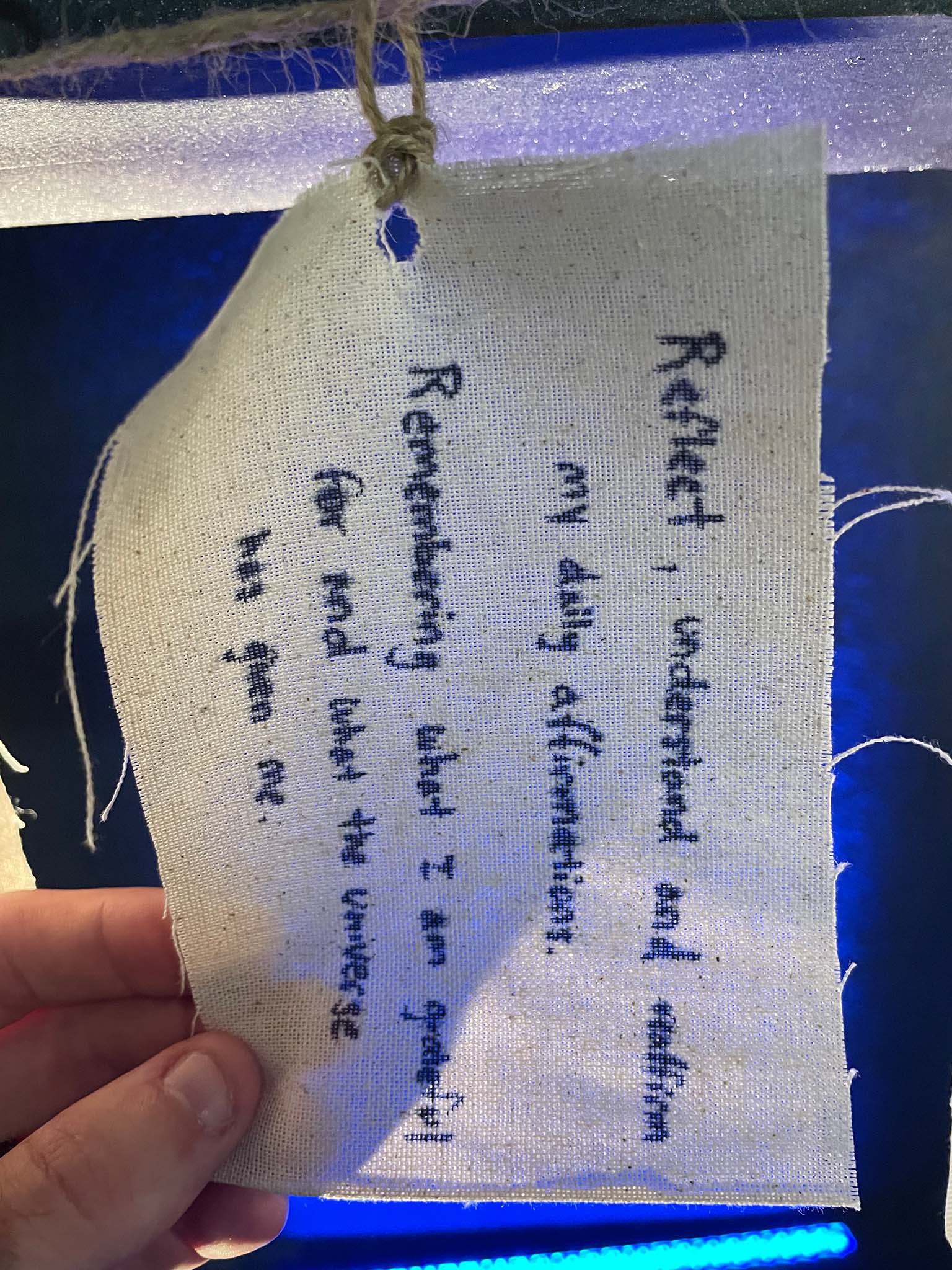
Photography by Sebastian Rojas. Additional photos by David B. Witwer.
